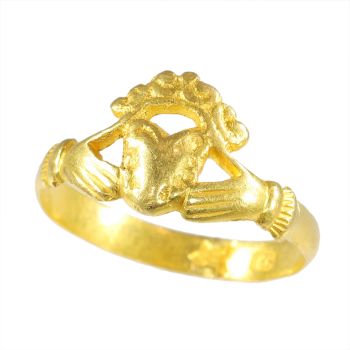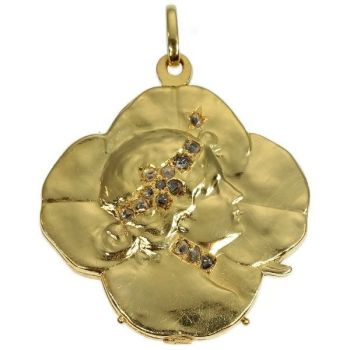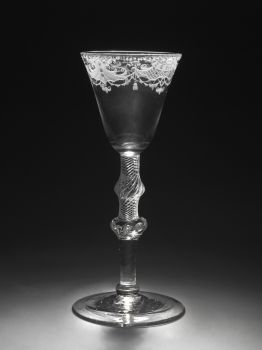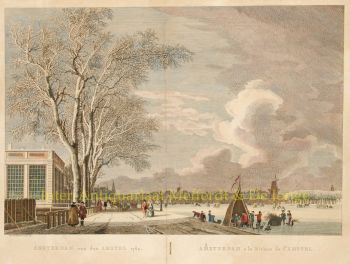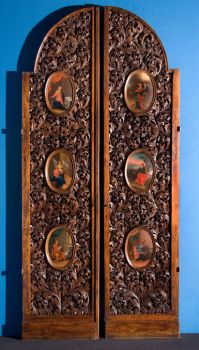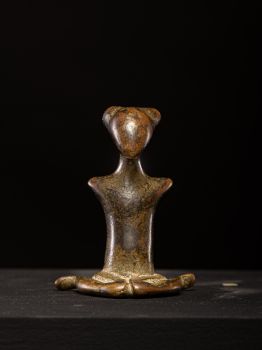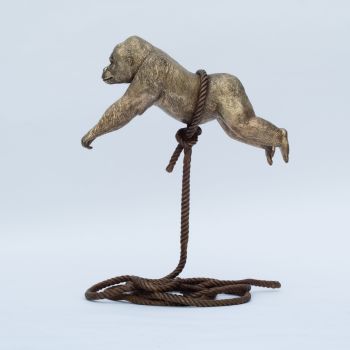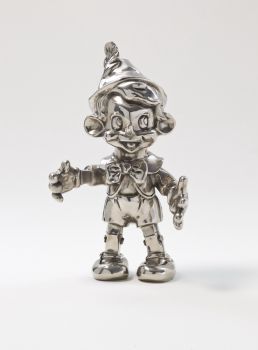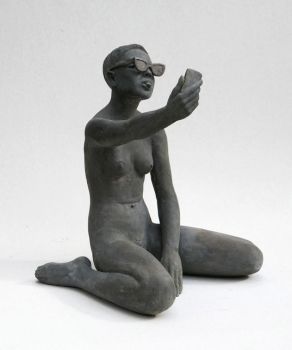A Burmese hintha betel container 1800 - 1850
Artista Desconocido
BronceMetal
15 cm
ConditionExcellent
€ 1.300
Famarte
- Sobre la obra de arteThe betel container is in the shape of a hintha or sacred goose with prominent wings and a tail. In Burma as in India, the sacred goose was associated with royalty or longevity.
The body of the hintha separates into two halves revealing a shallow cavity, where small quantities of betel were stored.
The offering of betel--a mildly narcotic chewing quid--was an essential element of traditional Burmese society. Every household, including the royal family's, had a set of utensils for its preparation. Betel leaves, used to wrap the blend of areca-nut shavings, lime and spices, were stored in the container.
The hintha is standing upright with tail erect, a ball issuing from its beak, engraved with feathers to the body and scales to the head. - Sobre el artista
Puede suceder que un artista o creador sea desconocido.
Algunas obras no deben determinarse por quién está hecho o por (un grupo de) artesanos. Algunos ejemplos son estatuas de la Antigüedad, muebles, espejos o firmas que no son claras o legibles, pero también algunas obras no están firmadas en absoluto.
También puedes encontrar la siguiente descripción:
•"Atribuido a …." En su opinión, probablemente una obra del artista, al menos en parte.
•“Estudio de….” o “Taller de” En su opinión, una obra ejecutada en el estudio o taller del artista, posiblemente bajo su supervisión
•“Círculo de…” En su opinión, una obra del período del artista que muestra su influencia, estrechamente asociado con el artista pero no necesariamente su alumno.
•"Estilo de …." o “Seguidor de…”. En su opinión, una obra ejecutada al estilo del artista pero no necesariamente por un alumno; puede ser contemporáneo o casi contemporáneo
•"Manera de …." En su opinión una obra al estilo del artista pero de fecha posterior
•"Después …." En su opinión, una copia (de cualquier fecha) de una obra del artista
•“Firmado…”, “Fechado…” o “Inscrito” En su opinión, la obra ha sido firmada/fechada/inscrita por el artista. La adición de un signo de interrogación indica un elemento de duda.
•“Con firma…”, “Con fecha…”, “Con inscripción…” o “Lleva firma/fecha/inscripción” en su opinión la firma/fecha/inscripción ha sido añadida por alguien que no es el artista
¿Está interesado en comprar esta obra de arte?
Artwork details
Related artworks
- 1 - 4 / 12
Unbekannter Künstler
Silber Russische Präsentation Osterei1880 - 1899
Preis auf AnfrageH.W.C. Dullaert Art & Antiques Dealer
Unbekannter Künstler
A white jade ‘Lotus Seedpod and Bug’ carving, Qing dynasty, 18th century18th century
Preis auf AnfrageMenken Works of Art
Unbekannter Künstler
Eine JURUNA TRIBE FEATHER HEADDRESS1900 - 1950
Preis auf AnfrageZebregs & Röell - Fine Art - Antiques
1 - 4 / 24- 1 - 4 / 24
Lambertus Zijl
Portrait of Juliana, queen of the Netherlands (1948-1990)1900 - 1950
Preis auf AnfrageKunsthandel Pygmalion
1 - 4 / 24- 1 - 4 / 7




